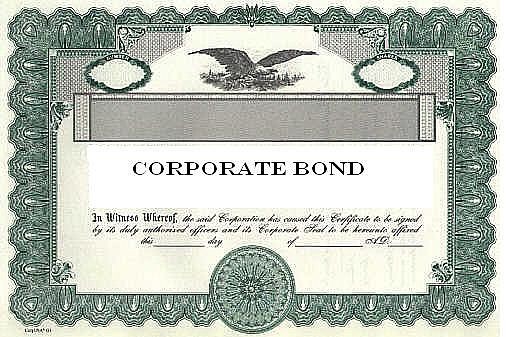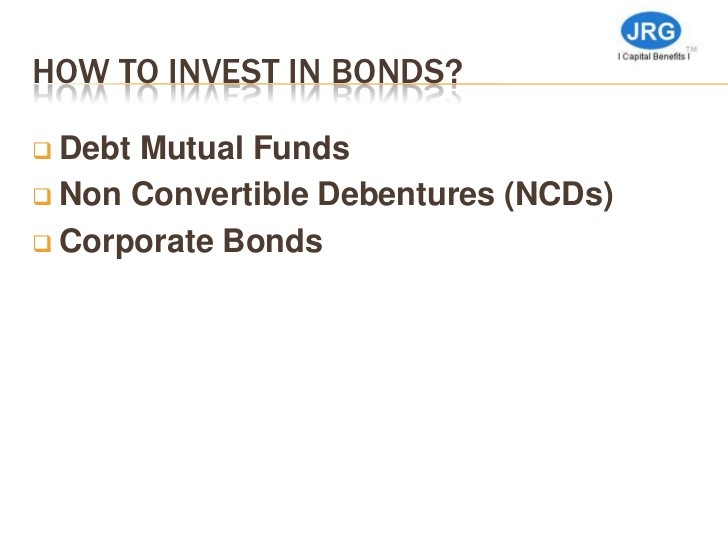How to Invest in Bonds in 2012
Post on: 15 Июль, 2015 No Comment

Many pros are bracing for higher interest rates but are willing to shoulder some risk of defaults
Bond investors, pick your poison.
Interest rates are pitifully low for old standbys like Treasurys and highly rated corporate bonds. But the risk factor increases so rapidly the more one tries to reach for higher returns that it is hard these days to know how to allocate fixed-income dollars.
More in Investing in Funds
Before investing, one has to carefully weigh and compare risks including rising rates, possible defaults, currency swings and liquidity.
To get the best balance of risk and return, the answer may be mixing various types of taxable and municipal bonds for maximum diversification.
In the current climate, many pros also suggest that investors say yes to moderate credit risk but limit their exposure to an eventual rise in rates.
Here’s how to strike a good balance between risk and reward in today’s bond market:
Know the two basic types of bond risk and how those risks compare
Many people mistakenly believe bonds are entirely safe. Actually, bondholders continually face two major threats to the value of their investments: interest-rate risk and credit risk.
The first stems from expectations that stronger economic activity will fan inflation, eroding returns on securities that pay fixed rates of interest—as most bonds do. Such worries can spark selling. And as prices fall, that pushes up yields, which move the opposite way.
You might not be affected if you hold individual bonds and don’t sell before maturity, although rising yields do entail an opportunity cost: You’re stuck with low rates while newer securities would offer better returns. But if you own a bond fund, the risk is greater: Funds don’t have a final maturity and lose value as long as rates are rising.
The other key concern, credit risk, results from fears that a bond issuer can’t make interest payments or repay principal at maturity. The trade-off is higher-risk issuers have to pay higher interest to lure bond buyers, boosting investors’ income if the bond doesn’t go bad.
Robert Hall, a fixed-income fund manager at Boston-based MFS Investment Management, is among those who say it makes sense now to base bond-investment decisions more on credit risk than on rate risk.
Most bond professionals believe rates are going to climb eventually. But trying to anticipate rates has been a losing game,» says Mr. Hall. During the economic recovery so far, U.S. rates have remained near historic lows because of strong global demand for lower-risk investments and central-bank actions to keep rates low in order to spark growth.
Assessing an issuer’s credit risk is an easier exercise, by comparison. You can get your hands around credit risk» by scrutinizing an issuer’s financial reports, Mr. Hall says.
Some investors have been taking more credit risk this year. According to fund tracker Morningstar Inc. high-yield funds—which hold below-investment-grade, or junk, bonds—attracted nearly $15 billion through March. Tax-exempt and emerging-markets funds, where credit risk also plays a big role, saw good inflows, too.
To temper rate risk, climb lower on the corporate credit ladder.
Corporate bonds are rated according to perceived default risk. And the more default risk a bond carries, the less it tends to trade in sync with U.S. Treasurys. That means a portfolio of lower-rated bonds isn’t as vulnerable to any broad rise in rates.
Currently, 10-year investment-grade corporate bonds yield around 3%, or about one percentage point over 10-year Treasurys. That yield premium doesn’t adequately compensate for the principal loss they could suffer if rates were to spike, says Mr. Hall of MFS.
He arrives at this conclusion by doing some basic bond math. This involves computing a bond’s so-called duration, or interest-rate sensitivity, which is determined by its yield and time left until maturation. For a highly rated 10-year corporate bond, the sensitivity measure is about 7. If you multiply 7 by a hypothetical percentage-point increase in yields, you get the amount by which the bond’s price is likely to fall in response.
So, for the 10-year corporate in question, if rates rose by one percentage point, the impact would be a 7% decline in the value of your investment before any interest is paid.
But if you move lower on the ratings ladder to double B, the top tier for high-yield, below-investment-grade bonds, you’ll get around 6% to 7% in yield and a rate sensitivity around 4. If yields rose one percentage point, such bonds might still have a positive return after interest.
Another reason to own lower-rated corporate issues is that default risk has been falling, says Sabur Moini, a high-yield bond manager at Payden & Rygel, Los Angeles. As more investors have warmed to lower-rated bonds, their issuers have done a very good job at reducing debt, keeping costs low and building up cash balances, he says.
Mix in some municipals for possible tax savings.
In late 2010, muni prices plummeted as investors fled the sector amid fears of surging defaults by financially strapped local governments. Now, although prices have recovered somewhat, munis still offer very good value, says Dan Genter, who heads RNC Genter Capital Management in Los Angeles.
The interest that munis pay is exempt from federal income tax, and generally also from state tax in the state of issuance, so munis historically have yielded only about three-fourths as much as taxable Treasurys. But in an unusual situation, munis now yield about the same as Treasurys. That makes them cheap—not only to people in the top tax bracket, but to everyone, says Mr. Genter.
At around 2.5%, the current yield of top-quality, intermediate-maturity munis is the after-tax equivalent of nearly 4% on a taxable bond for an investor with a 33% marginal federal tax rate. The after-tax equivalent could be higher if federal tax rates increase next year, as scheduled under current law.
As muni investors have been focusing more on credit risk, the market has been trading less in sync with Treasurys. That means munis other than those with long maturities could offer some protection against any broad rise in Treasury yields, says John Miller, co-head of global fixed income at Chicago-based Nuveen Asset Management.
Illustrating the divergence, Nuveen All-American Municipal Bond returned 5.1% in the first four months of 2012, even after Treasury rates blipped higher in March. In contrast, the iShares Barclays 7-10 Year Treasury ETF returned just 0.6%, according to Morningstar.

Own emerging-markets bonds for yield and diversification.
Bonds of emerging-markets nations such as Brazil and Malaysia have yields five percentage points or more above those of government bonds in developed countries. And owning such bonds essentially means you are lending money to governments that are in a stronger position to repay it than governments of many developed countries, says Robert Stewart, a managing director and emerging-markets specialist at J.P. Morgan Funds in London.
The chief downside to these bonds is their volatility. These nations may have stronger growth prospects and smaller debt burdens than the U.S. for example. But at times of financial uncertainty, investors tend to rush back to the perceived safety of U.S. Treasurys.
Last September, as Europe’s financial woes prompted a flight to safety, the average emerging-markets bond fund tracked by Morningstar posted a negative 7.5% return for the month.
The answer for many investors is to add a modest helping of emerging-markets bonds to your plate—perhaps around 5% to 10% of your overall bond allocation, says Mr. Stewart.
Volatility-averse investors should choose a fund that invests mostly in U.S. dollar-denominated bonds because in uncertain times, bonds denominated in local currencies may be hurt more by flight to safety than those issued in U.S. dollars.
For instance, about 90% of the bonds owned by TCW Emerging Markets Income are denominated in dollars. The fund, which yields 6.5%, has large holdings of bonds issued in Brazil, Mexico and Russia.
To simplify things, consider funds with a diverse mix of securities.
Because institutional players dominate the credit markets, people with less money to invest who want credit exposure are usually better off owning mutual funds than individual bonds. Funds offer much better liquidity than individual corporate bonds, meaning that it is easier to buy and sell a position.
You could get moderate credit exposure through a fund in Morningstar’s multisector bond-fund grouping. Such funds invest in a mix of U.S. government, corporate and high-yield securities and periodically adjust holdings based on market conditions and manager expectations. Multisector funds also may have some holdings of non-U.S. bonds.
Among strongly performing multisector funds, Loomis Sayles Bond recently had about 60% of its holdings in corporate debt securities for an average portfolio credit rating of double-B and a moderate interest-rate sensitivity of 5.5. The fund also had about a third of its portfolio in non-U.S. securities. Over the 10 years through April, it ranks in the top 6% of Morningstar’s multisector group, with an average annual total return of 10%.
Michael Collins, who oversees multisector fund strategies at Prudential Investments, believes it is unclear whether U.S. rates will rise significantly in the near future. Still, in the funds he helps manage, Mr. Collins has been loading up on high-yield bonds because of the cushion they can provide against rising rates. Says Mr. Collins, High-quality bonds don’t pay much, and you potentially have a lot of downside there.
Mr. Pollock is a writer in Ridgewood, N.J. Email him at reports@wsj.com .
Corrections & Amplifications
Municipal-bond prices plummeted in late 2010 as investors fled the sector amid fears of surging defaults. An earlier version of this article incorrectly said prices plummeted last year.














